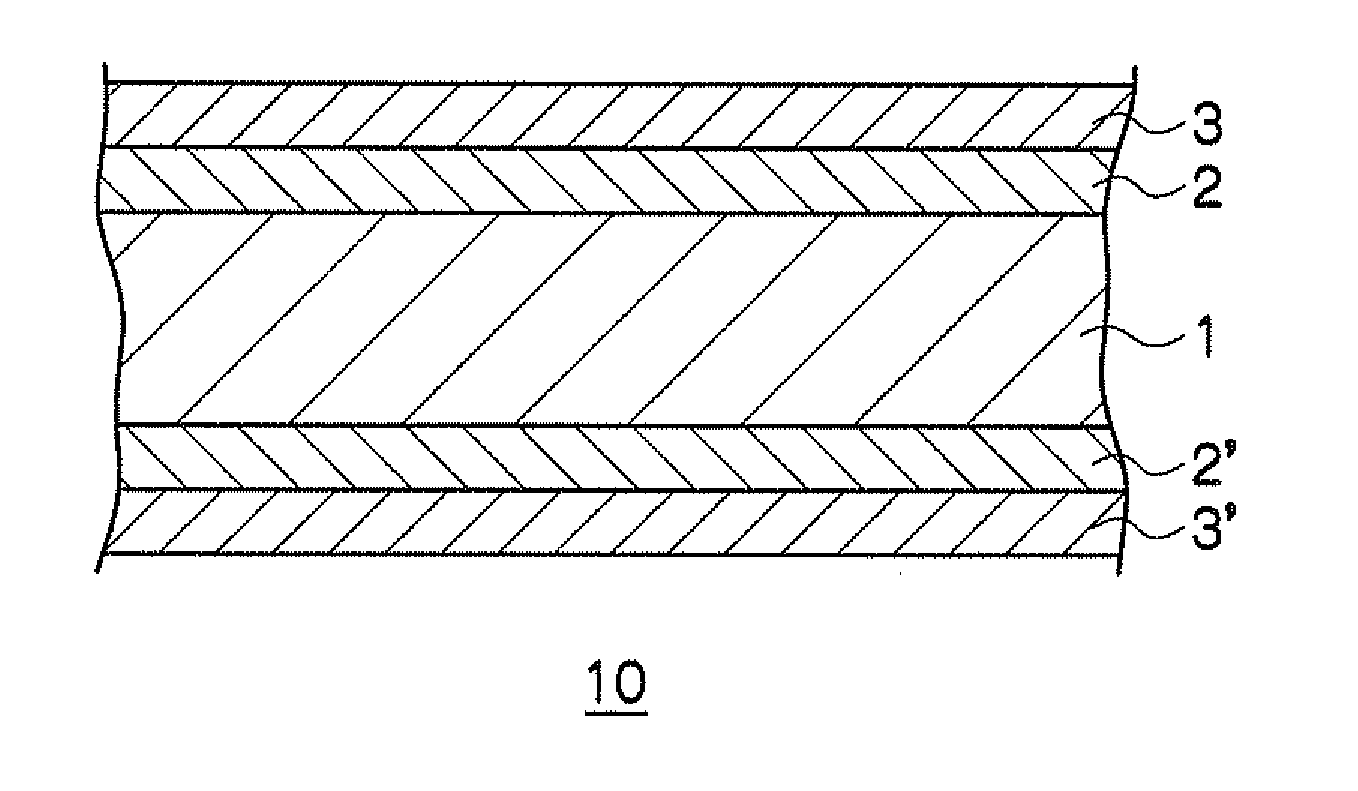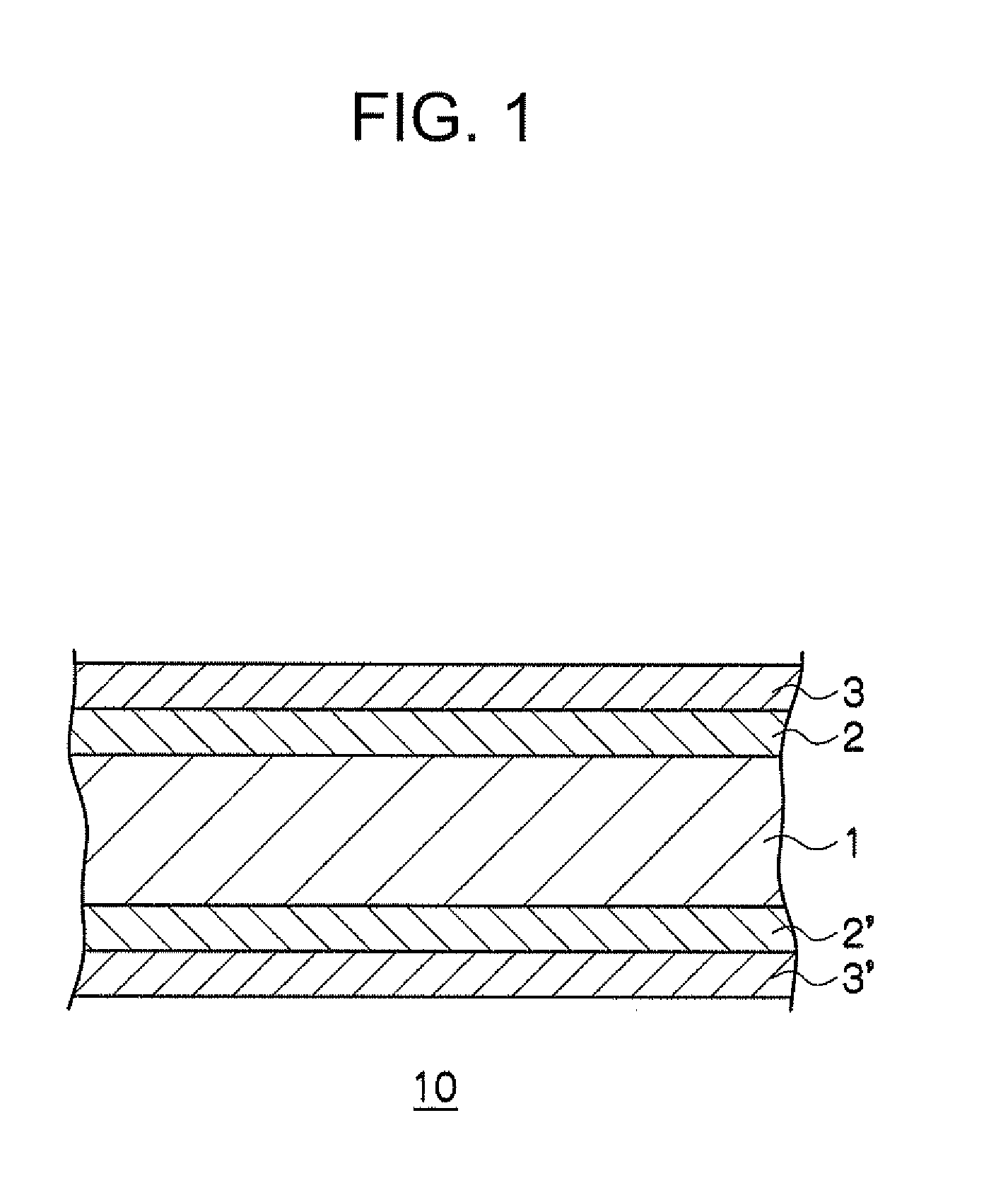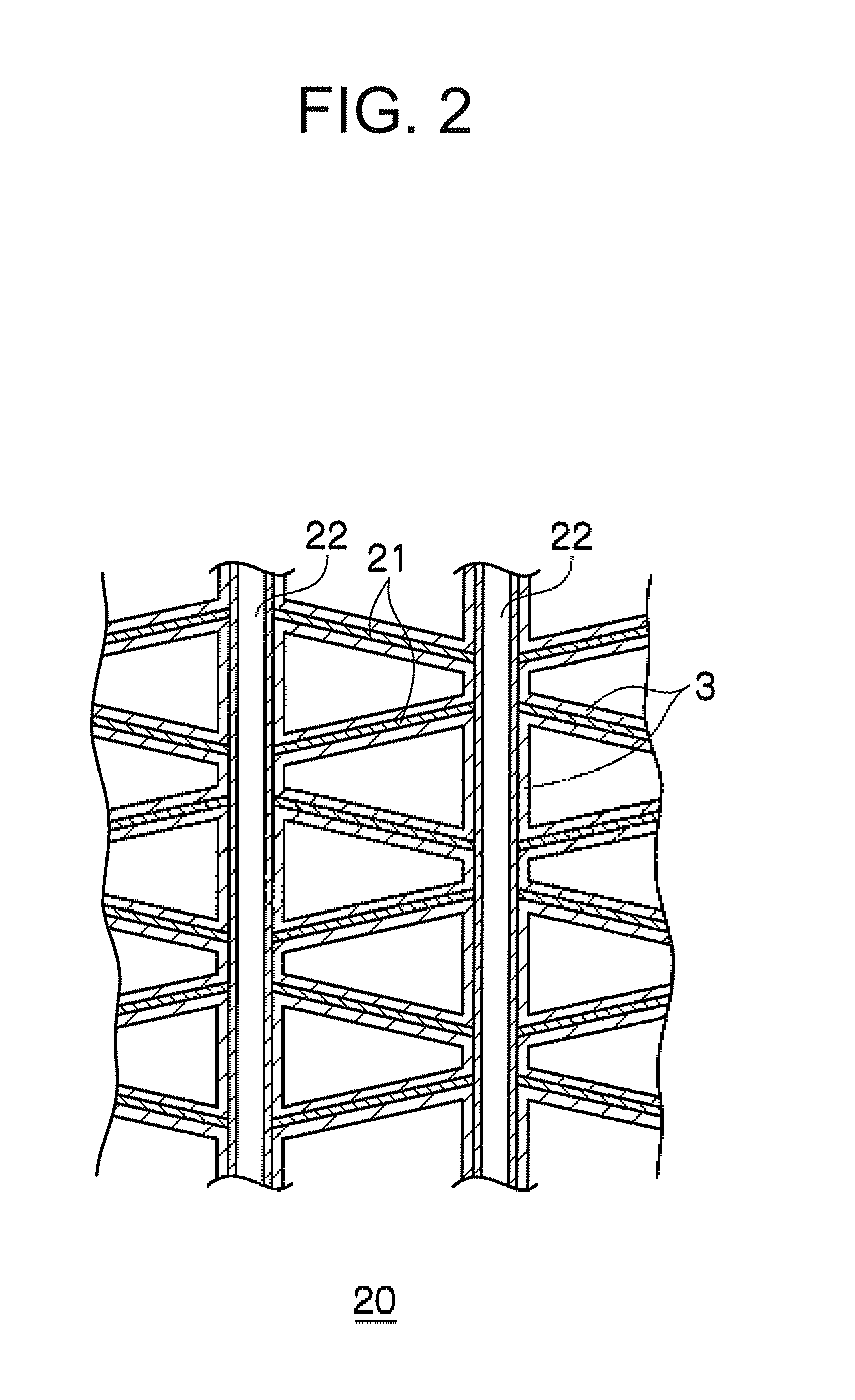Aluminum or aluminum alloy material having surface treatment coating film, and method for treating a surface thereof
a technology of aluminum alloy and coating film, which is applied in the direction of superimposed coating process, light and heating apparatus, paints with biocides, etc., can solve the problems of increasing draft resistance, reducing heat exchange efficiency, user discomfort, etc., to prevent the reduction of heat exchange efficiency, prevent the scattering of white powder, and maintain hydrophilicity
- Summary
- Abstract
- Description
- Claims
- Application Information
AI Technical Summary
Benefits of technology
Problems solved by technology
Method used
Image
Examples
example 1
[0068]A heat exchanger made of aluminum and aluminum alloy (see FIG. 2) was prepared as a workpiece. The workpiece was dipped in a 6% nitric acid solution at 10° C. for 120 seconds to perform surface conditioning. After the surface conditioning, the workpiece was water-rinsed by immersion. Next, there was used a treatment liquid having a pH of 3.2 containing ammonium metavanadate (V:150 mg / L) and fluorotitanic acid (Ti:50 mg / L). The treatment liquid was heated to 70° C. and then the workpiece was dipped in the liquid for 60 seconds. In a first protective layer formed on a surface of the workpiece, a coating weight of vanadium was 100 mg / m2 and a coating weight of titanium was 94 mg / m2, in which a mole ratio of Ti / V was 1.0. After the treatment, the workpiece was water-rinsed by immersion.
[0069]Next, there was used a treatment liquid having a solid content concentration of 3.0% by mass. The treatment liquid contained (1) a glycerylated chitosan / butanetetracarboxylic acid (mass ratio:...
example 2
[0070]As a workpiece, there was prepared a heat exchanger made of aluminum and aluminum alloy. The workpiece was dipped in a 5% potassium hydroxide solution at 40° C. for 60 seconds to perform surface conditioning. After the surface conditioning, the workpiece was water-rinsed by immersion. Next, there was used a treatment liquid having a pH of 3.8 containing ammonium metavanadate (V: 150 mg / L) and fluorozirconic acid (Zr: 100 mg / L). The treatment liquid was heated to 65° C. and then the workpiece was dipped in the liquid for 40 seconds. In a first protective layer formed on a surface of the workpiece, the coating weight of vanadium was 50 mg / m2 and the coating weight of zirconium was 143 mg / m2, in which a mole ratio of Zr / V was 1.6. After the treatment, the workpiece was water-rinsed by immersion.
[0071]Next, there was used a treatment liquid having a solid content concentration of 4.0% by mass. The treatment liquid contained (1) a glycerylated chitosan / citric acid (mass ratio: 0.8)...
example 3
[0072]As a workpiece, there was prepared a heat exchanger made of aluminum and aluminum alloy. The workpiece was dipped in water at 70° C. for 5 seconds to perform surface conditioning. After the surface conditioning, the workpiece was water-rinsed by immersion. Next, there was used a treatment liquid having a pH of 3.5 containing ammonium vanadate (V: 40 mg / L), fluorotitanic acid (Ti: 40 mg / L), and fluorozirconic acid (Zr: 200 mg / L). The treatment liquid was heated to 20° C. and then the workpiece was dipped in the liquid for 10 seconds. In a first protective layer formed on the surface of the workpiece, the coating weight of vanadium was 2 mg / m2, the coating weight oftitanium was 7 mg / m2, and the coating weight of zirconium was 4.6 mg / m2, in which a mole ratio of (Ti+Zr) / V was 5.0. After the treatment, the workpiece was water-rinsed by immersion.
[0073]Next, there was used a treatment liquid having a solid content concentration of 7.0% by mass. The treatment liquid contained (1) a ...
PUM
| Property | Measurement | Unit |
|---|---|---|
| mole ratio | aaaaa | aaaaa |
| mole ratio | aaaaa | aaaaa |
| mass ratio | aaaaa | aaaaa |
Abstract
Description
Claims
Application Information
 Login to View More
Login to View More - R&D
- Intellectual Property
- Life Sciences
- Materials
- Tech Scout
- Unparalleled Data Quality
- Higher Quality Content
- 60% Fewer Hallucinations
Browse by: Latest US Patents, China's latest patents, Technical Efficacy Thesaurus, Application Domain, Technology Topic, Popular Technical Reports.
© 2025 PatSnap. All rights reserved.Legal|Privacy policy|Modern Slavery Act Transparency Statement|Sitemap|About US| Contact US: help@patsnap.com



